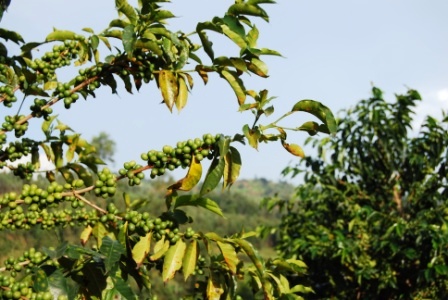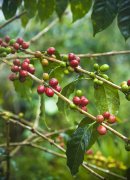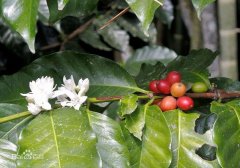Sidamo sidamo Coffee Shakiso shakisso producing area Ethiopia Sidamo Coffee Light

Nowadays, there are more and more water washing treatment plants in Ethiopia. Small farmers sell the harvested coffee fruit to the processing plant, peel it and resell it in the auction system, and then transfer it to the port of Assab in Eritrea in the Red Sea and the port of Djibouti in Djibouti near the Bay of Aden. The coffee is the country's main agricultural export, but its own annual consumption is also astonishing, about 1500000bags/60kg. Accounted for 50% of the total generation. Wild coffee grows in the tropical rain forests of the southwestern plateau, and most of them are selected by hand, but because of this, many local people maliciously destroy the naturally formed rainforest areas-either felled or burned in order to reach the rugged mountains that are inaccessible. But it seriously affected the ecological balance.
Whether it is raw coffee washed or sunburned, all exported coffee is sent to the capital, Addis Ababa, and the DIRE DAWA auction exit in Hara province. The DIRE DAWA auction center usually exports sunburn halas in the area. Coffee information from different farms can be seen in the auction house every day to facilitate the purchase of traders. Several officials from Ethiopia also go in and out of the center every day to inspect and set grades. Each time a random sample of the same shipment of raw beans 3 kg inspection.
The Sidamo producing area, which is 1400-2200 meters above sea level, is a famous boutique coffee area in southern Ethiopia, bordering Kenya. The washed Sidamo is light green, the beans are small, the growth is oval, the fruit is full, the average quality is good, the smell is fragrant and mellow, a drop of entrance, endless aftertaste, with wild beauty.
Local small farmers began growing organic coffee in 2001 and work closely with medium-sized coffee producers because they are familiar with how to grow forest coffee in the highlands. It is one of the micro-producing areas with regional characteristics in the Sidamo producing area. The coffee in this region is quite unique, and the coffee produced has often attracted the attention of the market. The original meaning of Ninety Plus's legendary nekisse comes from Nectar from shakisso, and its producing area and name are all from Shaquiso Shakisso.
Flavor description: lemon and citrus, bright and crisp acidity, lemon, citrus, white grape juice, blackcurrant, Earl tea at the end
Important Notice :
前街咖啡 FrontStreet Coffee has moved to new addredd:
FrontStreet Coffee Address: 315,Donghua East Road,GuangZhou
Tel:020 38364473
- Prev

Sidamo boutique coffee cooked beans Ethiopia G2 manor bean washing treatment fruity flavor
There are many water treatment plants on the main roads of coffee producing areas, especially in Jima area, and a large number of treatment plants are not fully utilized because of the fierce competition, so the person in charge of the treatment plant pays higher prices to farmers, but worries about whether they can make a profit. Nowadays, a kilogram of raw beans is usually sold for about 2 Birr (Ethiopian units).
- Next

Yirgacheffe African monosodium glutamate of kochere Manor in Yega Ficher, Ethiopia
Nowadays, there are more and more water washing treatment plants in Ethiopia. Small farmers sell the harvested coffee fruit to the processing plant, peel it and resell it in the auction system, and then transfer it to the port of Assab in Eritrea in the Red Sea and the port of Djibouti in Djibouti near the Bay of Aden. The coffee is the country's main agricultural export, but its own annual consumption is also staggering.
Related
- What documents do you need to go through to open a coffee shop? coffee shop coffee shop certificate processing process
- How to purchase Coffee beans in small Cafe how to choose a suitable supplier for domestic Coffee supply Company
- How to drink Starbucks Fragrance White Coffee? how to make Australian White Coffee? what Italian coffee beans are recommended?
- The Story of Flora Coffee: the name of Flora Coffee Bean and the implication of the Flowers on Florna Coffee
- How much does a cup of coffee cost? How much is the profit of a cup of coffee? What is the profit of the coffee shop in a year?
- Yunnan small Coffee, known as "fragrant Coffee", introduces the characteristics of Alpine Arabica Coffee producing areas in Yunnan, China
- 2023 latest Starbucks full menu price list how much is a cup of Starbucks coffee what is better to drink the most popular hot and cold drinks recommended
- Starbucks different kinds of Coffee Price list Starbucks menu 2023 Top Ten Best drinks in Starbucks
- Starbucks Spring praise Comprehensive matching Coffee Bean theme Story Packaging implication and taste description
- The cost of a cup of coffee latte American coffee cost price and selling price

